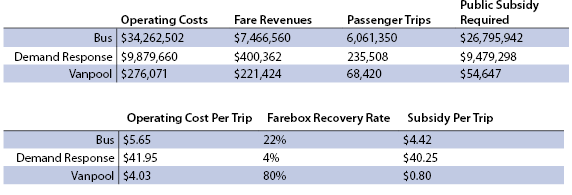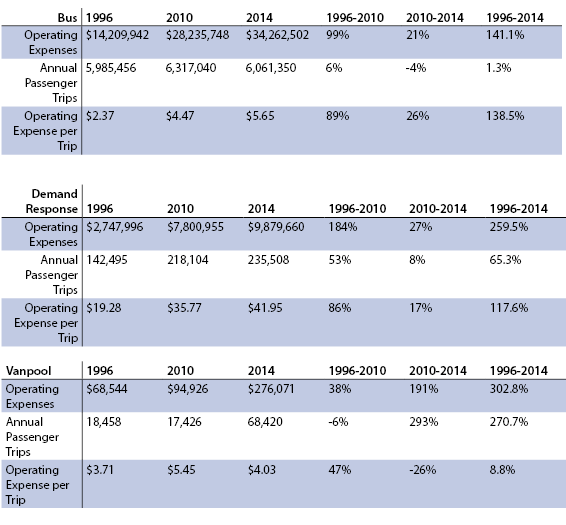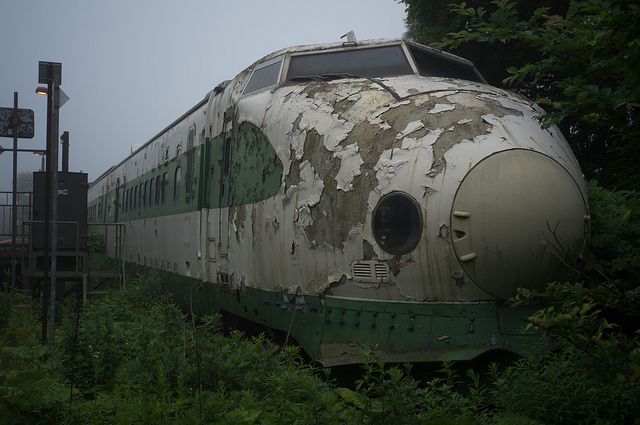Updated Key Facts about Clark County Transit (C-TRAN)
![]() Download a PDF of these Key Facts with sources and citations here.
Download a PDF of these Key Facts with sources and citations here.
New look at C-TRAN shows declining ridership; increasing costs
Introduction
New research released by Washington Policy Center, an independent, public policy think tank, provides key facts about the Clark County Public Transportation Benefit Area Authority (C-TRAN).
C-TRAN is a Public Transportation Benefit Authority and provides public transportation services in the southwest region of Washington state, including fixed route bus, commuter bus, demand response and vanpool services to residents in or near the cities of Vancouver, La Center, Washougal, Battle Ground and Camas. C-TRAN also provides bus connections to Portland, Oregon. The transit agency is governed by a 10-member board of directors made up of local elected officials and a non-voting labor representative.
The bulk of the money C-TRAN board members spend comes from local taxes. C-TRAN officials last raised the sales tax in 2011, and currently impose a 0.7 percent sales tax on retail purchases throughout their service area. This is in addition to state and federal grants and money collected at the farebox. In 2012 C-TRAN officials’ said they wanted to raise the sales tax again to build a light rail system and to fund Bus Rapid Transit (BRT). The plan was rejected by 56.6 percent of voters. Despite the no-confidence vote, C-TRAN officials’ continue to spend their reserve funds to build BRT routes on the Fourth Plain Boulevard.
Washington Policy Center first provided an independent Key Facts about C-TRAN report in 2012, allowing the public to review C-TRAN’s performance over a 15 year period. The study found that between 1996 and 2010 agency managers more than doubled operating costs despite only a six percent increase in overall ridership. Pay raises and other benefits given to public employees drove 94 percent of expense growth, from $10.3 million in salaries, wages and benefits in 1996 to $28.3 million in 2010.
The study also found that C-TRAN managers direct a disproportionately large share of operating expenses to wages and benefits. In 2010, wages and benefits represented 78 percent of C-TRAN’s total operating expenses, the highest level of all urban transit agencies in Washington state.
Updated report with latest information (2010-2014)
According to the latest information from the Washington State Department of Transportation, C-TRAN officials continue to increase their costs. Between 2010 and 2014, they increased their
operating costs from $36.1 million to $44.4 million, a 23 percent increase, more than double the inflation rate of 8.6 percent over the same time period.
Personnel costs continue to be the largest cost driver, as C-TRAN officials increased salaries, wages and benefits by 20 percent to $34 million. At 77 percent of operating costs, C-TRAN officials continue to spend a greater proportion of their total operating budget on wages and benefits than any other urban transit agency in the state.
Despite spending 21 percent more on its bus program, C-TRAN officials say their bus ridership dropped four percent. Ridership losses and spending increases boosted the cost per trip on buses by 26 percent, from $4.47 to $5.65. The average fare paid per trip on a C-TRAN bus is $1.23, requiring a taxpayer subsidy of $4.42 every time someone boards a C-TRAN bus. The great majority of expenses incurred by C-TRAN managers are paid by people who don’t use the service.
Despite declining ridership, tax revenues continue to pour into C-TRAN. In 2010, C-TRAN collected $22 million in sales tax revenue to fund operations. In 2014, C-TRAN officials announced record sales tax collections, taking a windfall of just under $39 million, a 77 percent increase since 2010.
Long Term Trends
More spending has not translated to proportional increases in bus service or ridership. C-TRAN officials have increased bus platform hours by 13 percent over 1996 levels, yet bus ridership is only 1.3 percent higher in 2014 than it was in 1996. In addition, overall transit ridership is only up 3.5 percent over 1996 levels, despite substantial population growth.
To put compensation costs into perspective, in 1996, C-TRAN officials reported paying $10,342,674 in salaries, wages and benefits. In 2014, transit officials reported compensation costs jumped to $34,075,510, a 229 percent increase, more than four times the 51 percent inflation rate over the time period.
Conclusion
The updated review shows that C-TRAN is collecting more money from the public than ever before and appears to be directing funding increases primarily to employee salary and benefit increases. C-TRAN officials’ spending continues to significantly outpace inflation without a substantial increase in ridership over the long term. More recently, while demand response and vanpool services have seen a slight uptick in ridership, bus ridership has fallen, resulting in fewer people taking C-TRAN services overall.
Modal Information (2014)

Performance Trends








